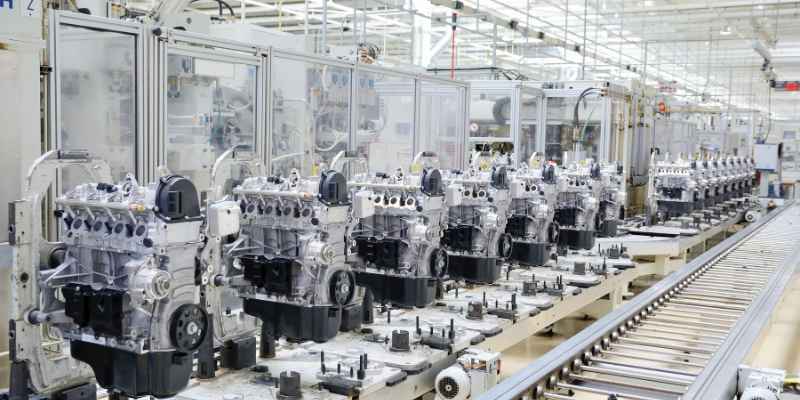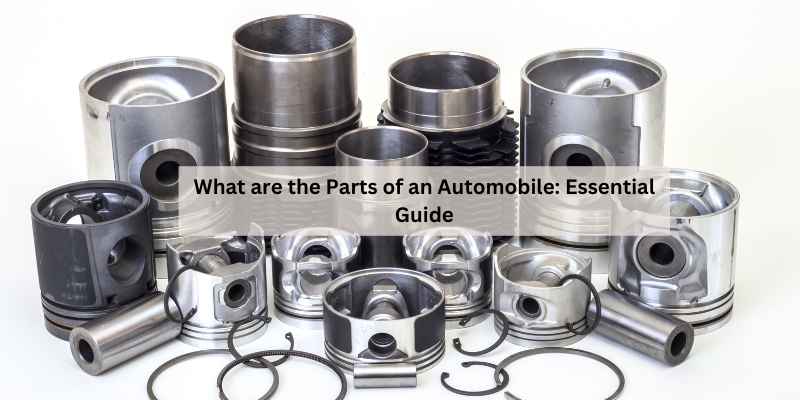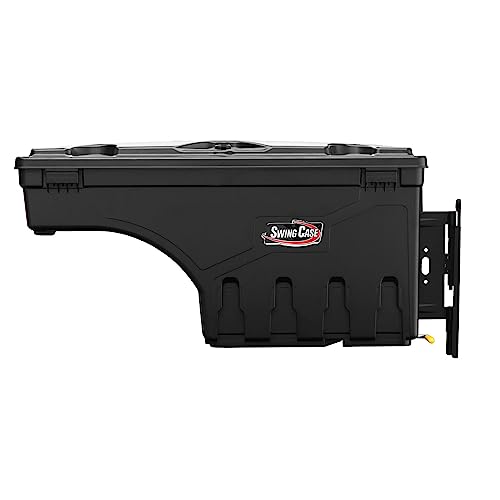What are the Parts of an Automobile: Essential Guide
An automobile consists of various components that work together to ensure its proper functioning. The basic parts of an automobile include the engine, transmission, battery, alternator, brakes, chassis, axle, muffler, and braking system.
The engine is the heart of the car, while the transmission transfers power from the engine to the wheels. The battery and alternator provide electrical power to the car, while the brakes are responsible for slowing down or stopping the vehicle.
The chassis provides structural support, and the axle connects the wheels to the car. The muffler reduces noise levels, and the braking system ensures safety by stopping the car when needed. Understanding the parts of an automobile is essential for proper maintenance and repair of the vehicle.
Introduction To Automobile Anatomy
Discovering the intricate components of an automobile reveals a complex system comprising the engine, transmission, brakes, steering, suspension, and more. Each part plays a crucial role in the vehicle’s overall functionality and safety on the road.
The Importance Of Knowing Your Vehicle
Understanding the different parts of your automobile is crucial for maintaining and troubleshooting your vehicle effectively.
Categories Of Car Parts
- Engine Components: The heart of the vehicle that powers its movement.
- Exterior Parts: Including body panels, lights, and mirrors.
- Braking System: Ensures safe and efficient stopping of the vehicle.
- Suspension and Steering: Responsible for smooth handling and control.
- Electrical System: Powers various components and accessories in the vehicle.
- Cooling and Lubrication: Maintains engine temperature and reduces friction.
When it comes to understanding the intricacies of your vehicle, delving into the anatomy of an automobile is essential. An automobile consists of various parts that work together seamlessly to ensure its smooth operation. From the engine that powers the vehicle to the exterior components that define its appearance, each part plays a vital role in the functioning of the automobile.
The Engine
An automobile engine is like the heart of the vehicle, responsible for powering its movement and performance.
Cylinder Block And Pistons
The cylinder block houses the cylinders where fuel combustion occurs. Pistons move up and down within the cylinders.
Crankshaft And Camshaft
The crankshaft converts the linear motion of the pistons into rotational motion. The camshaft controls the opening and closing of valves.
Cylinder Head And Valves
The cylinder head sits atop the cylinder block, sealing the combustion chamber. Valves regulate the flow of air and fuel into the cylinders.
Powertrain And Transmission
An automobile’s powertrain and transmission are crucial components that are responsible for transferring power from the engine to the wheels, allowing the vehicle to move. The powertrain consists of the engine and the transmission, working together to provide the necessary power and torque to drive the vehicle.
Types Of Transmissions
There are several types of transmissions used in automobiles, each with its unique mechanism for transferring power from the engine to the wheels. The main types of transmissions include:
- Manual Transmission
- Automatic Transmission
- Continuously Variable Transmission (CVT)
Clutch And Gearbox Mechanics
The clutch and gearbox are integral parts of a manual transmission system. The clutch is responsible for engaging and disengaging the engine from the gearbox, allowing the driver to shift gears smoothly. The gearbox, on the other hand, consists of a set of gears that enable the driver to select the appropriate gear ratio for different driving conditions, such as accelerating, cruising, or climbing hills.
Fuel And Ignition Systems
Fuel and ignition systems are crucial components of an automobile, responsible for powering the engine and keeping it running smoothly. These systems work together to deliver the right amount of fuel and spark at the precise moment, ensuring optimal engine performance.
Fuel Injection System
The fuel injection system plays a vital role in delivering fuel to the engine. It precisely meters and atomizes the fuel before injecting it into the combustion chamber. This system ensures efficient fuel consumption and reduces harmful emissions, contributing to better overall vehicle performance.
Spark Plugs And Ignition Timing
Spark plugs are essential for igniting the air-fuel mixture in the combustion chamber. They produce the spark needed to initiate the combustion process, and their proper functioning is crucial for engine efficiency. Ignition timing, on the other hand, refers to the precise timing of the spark plug firing in relation to the position of the pistons. Correct ignition timing is vital for optimal engine power and fuel efficiency.
Cooling And Lubrication

Cooling and lubrication are essential functions in an automobile that ensure the engine operates at optimal temperatures and remains properly lubricated for smooth operation. Let’s delve into the specifics of these crucial processes.
Radiator Functionality
The radiator is a vital component of the vehicle’s cooling system, responsible for dissipating heat from the engine. It accomplishes this by circulating coolant through the engine, which absorbs heat, and then transferring it to the radiator where the heat is dissipated into the surrounding air. This process helps to maintain the engine at an ideal operating temperature, preventing overheating and potential damage.
Oil Circulation In The Engine
Oil circulation within the engine is a critical aspect of lubrication. The engine oil serves to reduce friction between moving parts, preventing wear and tear. It also aids in dissipating heat generated by the engine. The oil pump ensures the continuous circulation of oil throughout the engine, ensuring that all components are adequately lubricated for smooth and efficient operation.
Electrical Components
When it comes to the electrical components of an automobile, several essential parts work together to power the vehicle and ensure its smooth operation. These components are vital for the proper functioning of various systems, including the ignition, lighting, and electronic features.
Battery Essentials
The battery is a crucial component that provides the necessary electrical power to start the engine and operate the vehicle’s electrical systems. It stores energy in the form of chemical reactions, which is then converted into electrical energy to power the starter motor and other electrical components.
Alternator And Starter Motor
The alternator is responsible for generating electrical power to recharge the battery and power the vehicle’s electrical systems while the engine is running. It also ensures a consistent flow of electricity to the various components, preventing power shortages.
The starter motor is essential for initiating the engine’s combustion process by turning the crankshaft. It draws power from the battery to start the engine and plays a crucial role in the vehicle’s overall functionality.
Suspension And Steering Systems
Shock Absorbers And Struts
Shock absorbers and struts are crucial components of a car’s suspension system. They help absorb shocks and vibrations, providing a smooth and stable ride.
Steering Mechanism Explained
The steering mechanism in a vehicle is responsible for controlling the direction of the wheels. It ensures proper handling and maneuverability.
Braking System
Brake Types And Functions
Brakes in automobiles play a crucial role in ensuring safety on the road. There are different types of brakes, each serving a specific function:
- Disc Brakes: Use calipers to squeeze brake pads against a rotor to slow down the vehicle.
- Drum Brakes: Utilize brake shoes to press against the inner surface of a drum to stop the vehicle.
- Emergency Brakes: Provide a backup braking system in case the primary brakes fail.
Hydraulic And Anti-lock Braking Systems
The hydraulic braking system uses fluid pressure to transmit force from the brake pedal to the brake pads, enabling efficient braking. On the other hand, anti-lock braking systems (ABS) prevent wheel lock-up during sudden braking, improving vehicle control and stability.
Exhaust System And Emissions
An essential part of any automobile is the Exhaust System and Emissions. The exhaust system plays a crucial role in removing harmful gases from the engine and maintaining environmental standards.
Components Of The Exhaust System
The Exhaust System consists of several components that work together to guide exhaust gases away from the engine. These components include:
- Exhaust Manifold
- Catalytic Converter
- Exhaust Pipe
- Muffler
Catalytic Converter And Emission Control
The Catalytic Converter is a vital part of the exhaust system that helps reduce harmful emissions. It converts toxic gases into less harmful substances before releasing them into the atmosphere.
Emission control systems in modern vehicles are designed to minimize the release of pollutants into the air. This includes monitoring and regulating emissions to comply with environmental regulations.
Body And Chassis
When it comes to the anatomy of an automobile, the body and chassis play a crucial role in providing structural support, protecting occupants, and influencing the vehicle’s aerodynamics and design elements. Let’s delve into the key components that make up the body and chassis of a car.
Frame And Structure
The frame and structure of a vehicle form the foundation on which the entire automobile is built. The frame provides rigidity and support, while the structure encompasses the body panels, roof, and pillars, contributing to the overall strength and safety of the vehicle.
Aerodynamics And Design Elements
Aerodynamics is a vital aspect of automotive engineering, influencing the vehicle’s performance and fuel efficiency. The design elements of a car, such as the shape, contours, and styling, not only contribute to its visual appeal but also play a significant role in enhancing aerodynamic efficiency.
Interior Components
The interior components of an automobile include the dashboard, seats, and center console. These parts contribute to the comfort and functionality of the vehicle’s interior space.
The interior components of an automobile are just as important as the exterior parts. The interior is where the driver and passengers spend most of their time and it is important that they are comfortable and have access to all the necessary features. Let’s take a closer look at the different interior components of an automobile.
Dashboard Features:
The dashboard is the control center of the automobile and it contains various features that are essential for the driver. Some of the important dashboard features include the speedometer, fuel gauge, odometer, and temperature gauge. These features help the driver to monitor the performance of the automobile and ensure that it is running smoothly. In addition to these features, modern automobiles also come with advanced features such as GPS navigation, infotainment systems, and climate control.
Seating and Comfort:
The seating and comfort features of an automobile are also very important. The seats should be comfortable and provide adequate support to the driver and passengers. The seats should also be adjustable so that the driver can find the most comfortable driving position. In addition to the seats, the automobile should also have features such as air conditioning, heating, and ventilation to ensure that the cabin remains comfortable in all weather conditions.
Overall, the interior components of an automobile play a crucial role in ensuring a safe and comfortable driving experience. It is important to choose an automobile that has all the necessary features and is comfortable to drive.
Safety Features
The safety features of an automobile include the braking system, chassis, and the engine. These components work together to ensure the vehicle’s safety on the road. The braking system helps to slow down or stop the car, while the chassis provides structural support, and the engine powers the vehicle.
Safety Features are an essential component of any automobile. These features ensure the safety of the driver and passengers in case of an accident. Two of the most important safety features are Airbags and Seatbelts. Additionally, Advanced Driver-Assistance Systems (ADAS) are becoming increasingly popular in modern vehicles.
Airbags And Seatbelts
Airbags and Seatbelts are the most crucial safety features in any automobile. Airbags are designed to inflate rapidly in the event of a collision, providing a cushion for the passengers and reducing the risk of serious injury. Seatbelts, on the other hand, keep the passengers restrained and prevent them from being thrown out of the vehicle during an accident. They also help to distribute the force of the impact across the body, reducing the risk of serious injuries.
Advanced Driver-assistance Systems
Advanced Driver-Assistance Systems (ADAS) are a set of technologies designed to assist the driver in various ways, such as preventing collisions, detecting obstacles, and improving visibility. ADAS features include blind-spot monitoring, lane departure warning, adaptive cruise control, and collision warning systems. These systems use sensors and cameras to detect potential hazards and alert the driver, or in some cases, take control of the vehicle to prevent a collision.
In conclusion, Safety Features are an integral part of any automobile, and they have come a long way over the years. Airbags and Seatbelts are the most crucial safety features, while ADAS is becoming increasingly popular in modern vehicles. When buying a car, it is essential to consider the safety features and ensure that they meet your needs.
Maintenance And Upkeep
Regular Check-ups
Regular check-ups are essential for maintaining the health and performance of your automobile. By scheduling routine inspections, you can identify and address potential issues before they escalate. This proactive approach not only ensures the safety of your vehicle but also helps in preventing costly repairs in the future.
Troubleshooting Common Issues
Understanding how to troubleshoot common issues can save you time and money. By familiarizing yourself with the signs of common problems such as strange noises, dashboard warning lights, or changes in performance, you can address issues promptly. Whether it’s a faulty battery, worn-out brakes, or a malfunctioning transmission, early troubleshooting can prevent further damage and keep your automobile running smoothly.
Innovations In Automobile Parts

Electric And Hybrid Technologies
Electric and hybrid technologies are revolutionizing the automotive industry.
Future Trends In Vehicle Design
The future of vehicle design is focused on sustainability and advanced technologies.
Frequently Asked Questions
What Are The Main Automotive Parts?
The main automotive parts include the engine, transmission, brakes, steering system, suspension, and electrical components. These are vital for the vehicle’s performance and safety.
What Are Automotive Parts?
Automotive parts are the essential components and systems that make up a vehicle, from engine to body panels.
What Are The Automotive Common Parts?
Common automotive parts include the engine, transmission, battery, alternator, radiator, axle, steering and suspension, and brakes. These components work together to ensure the vehicle’s proper functioning and safety.
What Are The Parts Of The Motor Vehicle?
Important parts of a motor vehicle include the engine, transmission, brakes, steering system, suspension, and electrical components.
Conclusion
Understanding the different parts of an automobile is crucial for every car owner. From the engine and transmission to the braking system and electrical components, each part plays a vital role in the overall functioning of the vehicle. By familiarizing oneself with these components, car owners can better maintain and troubleshoot their vehicles, ensuring safety and longevity.







